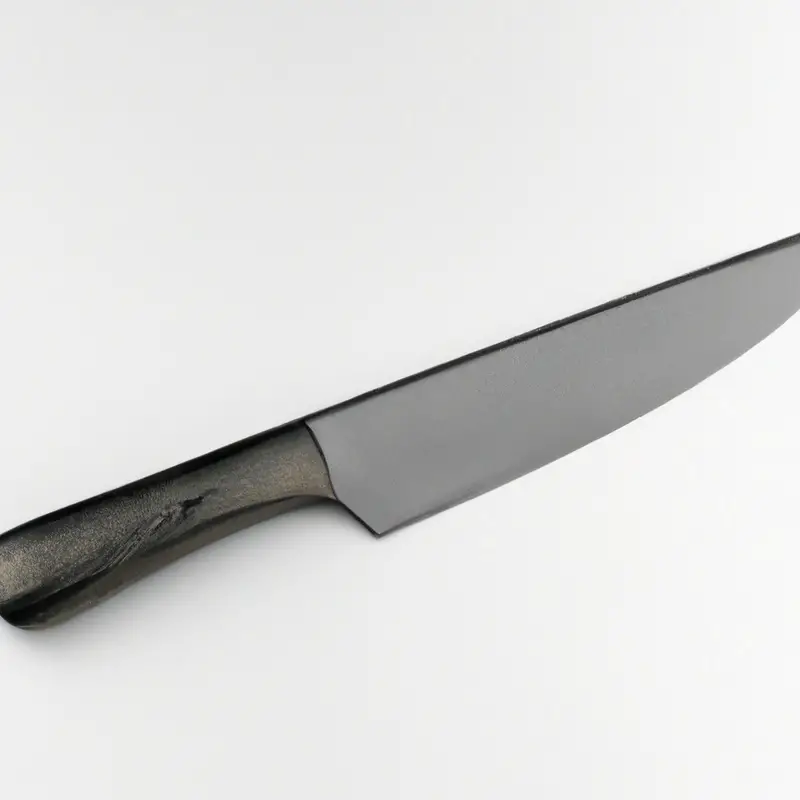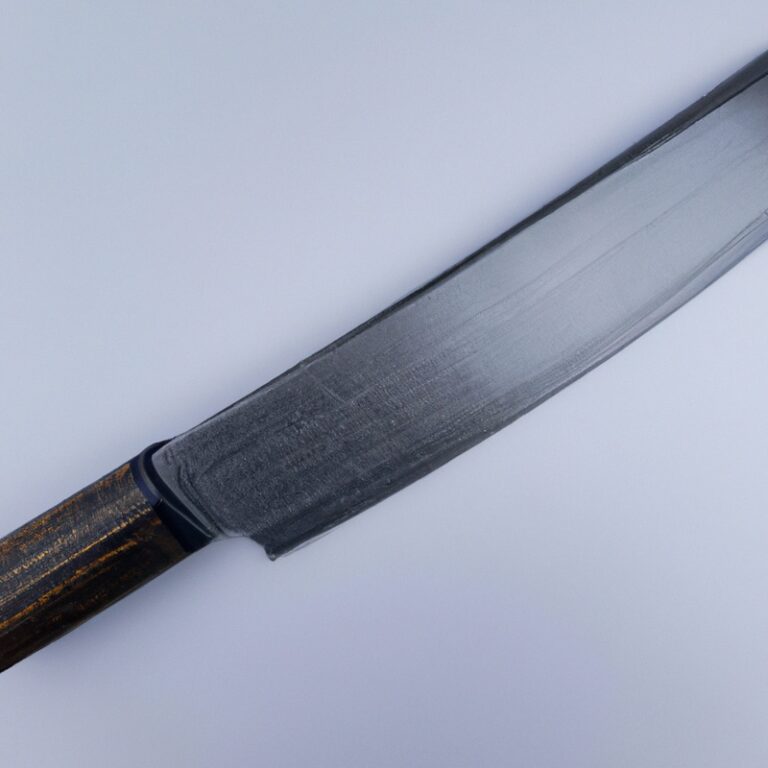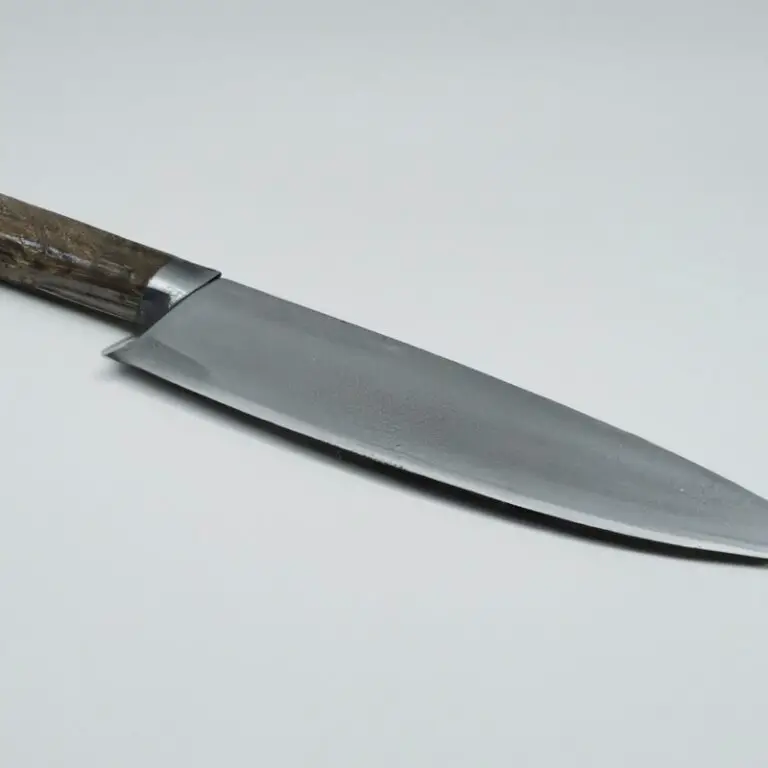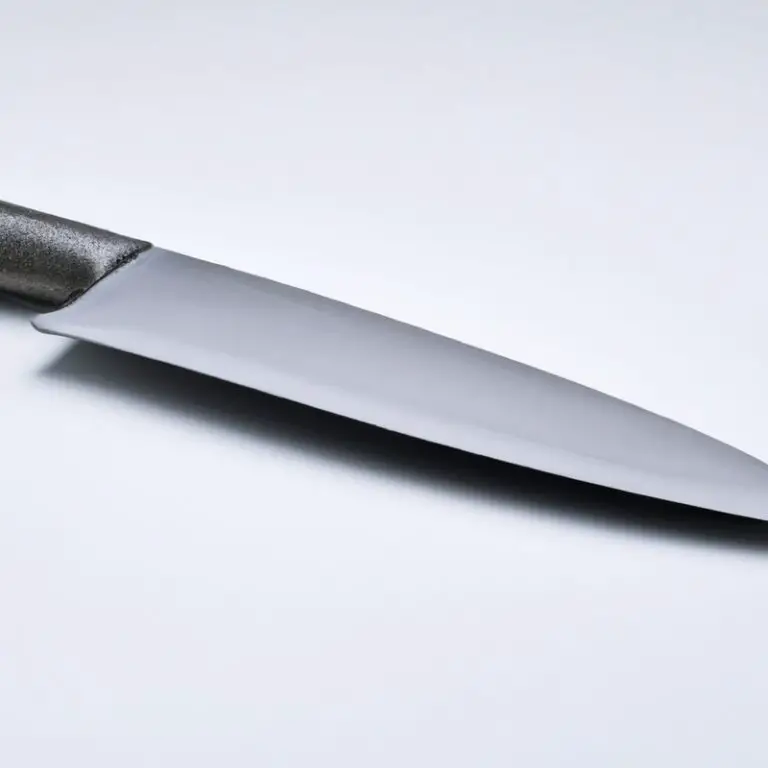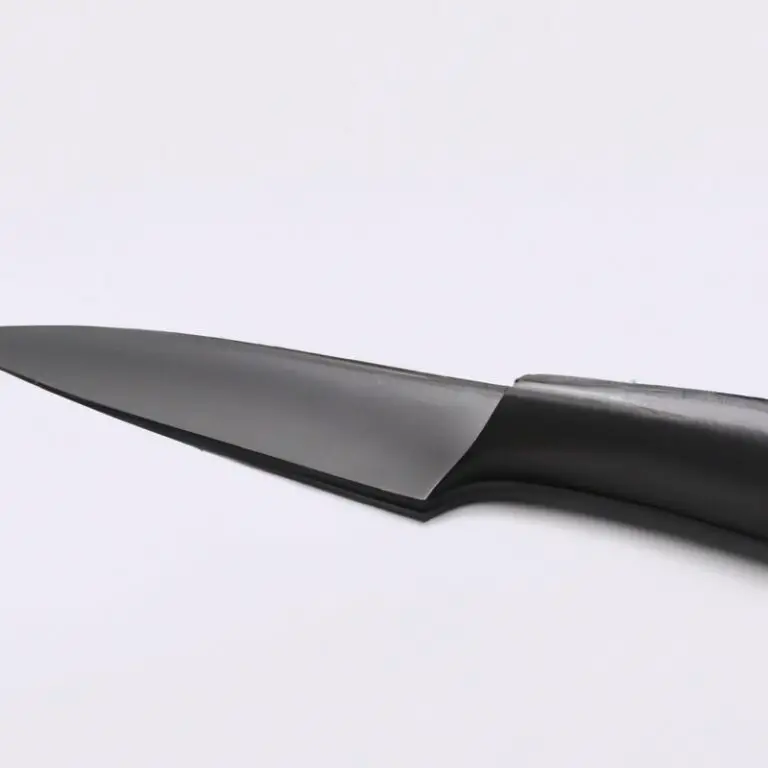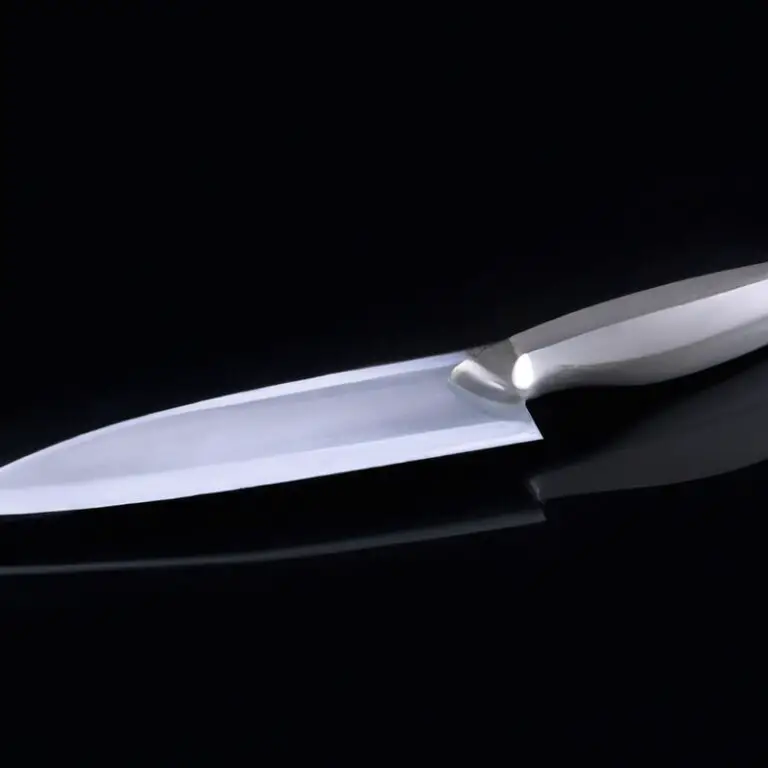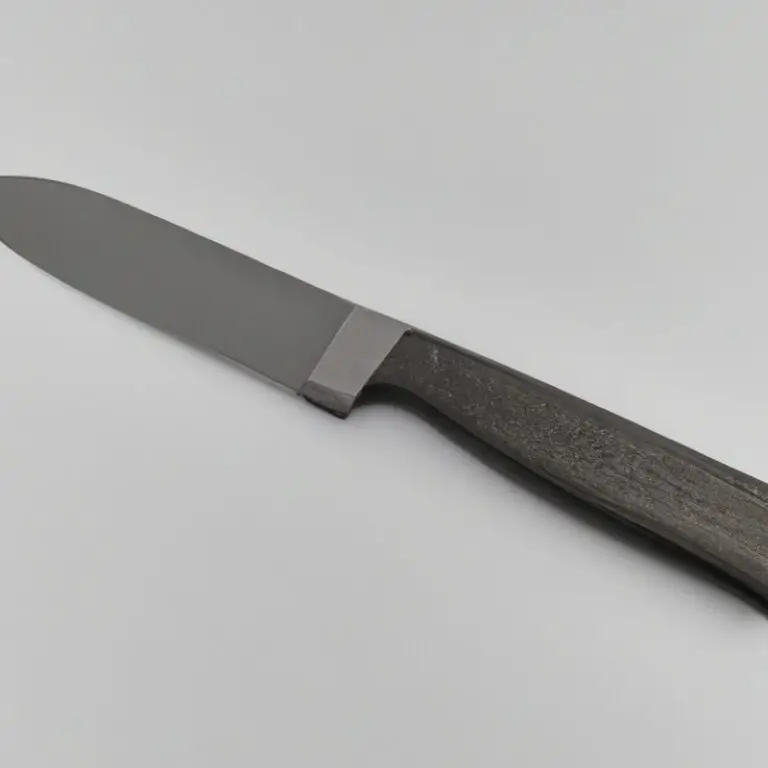How To Achieve Clean And Even Slices With a Gyuto Knife? Slice Like a Pro!
Key Takeaways:
- Use a sharp Gyuto knife to achieve clean and even slices for your culinary creations.
- Proper cutting technique, slicing angle, and pressure on the blade are key factors in achieving precision with your Gyuto knife.
- Practice and patience are crucial to achieving clean and even slices consistently with a Gyuto knife.
- Remember to maintain the integrity of the blade by using a cutting board made of soft materials, like wood or plastic.
Do you struggle with getting consistent slices from a Gyuto knife? Look no further.
As an experienced chef, I’ve honed my slicing techniques to achieve clean and even cuts every time.
In this article, I’ll guide you through the anatomy of a Gyuto knife, proper grip and stance, and advanced techniques for delicate items like herbs and fish. We’ll also cover sharpening, honing, and maintaining the edge for longevity.
Let’s slice our way to perfection with the Gyuto knife.
| Step | Description |
|---|---|
| 1 | Ensure the knife is sharp: A dull knife will crush rather than cut through food, making it difficult to create clean and even slices. Use a sharpening stone or honing rod to keep your Gyuto knife sharp. |
| 2 | Choose the right cutting board: A soft cutting board made of materials such as bamboo or plastic can cause the knife to dull quickly. Opt for a sturdy cutting board made of wood, or better yet, a composite material that is gentle on the knife and durable. |
| 3 | Use proper technique: Hold the knife with your index finger and thumb on the blade and your other fingers wrapped around the handle for stability. Use a rocking motion where the tip of the blade remains in contact with the cutting board when cutting up and down to produce clean slices. |
| 4 | Practice makes perfect: Don’t get discouraged if your slices are uneven at first. Practice slicing different foods and adjusting your technique until you achieve the desired results. |
Understanding the Anatomy of a Gyuto Knife for Clean and Even Slices
To achieve clean and even slices with a Gyuto knife, understanding its anatomy is crucial. The Gyuto knife is a Japanese-style chef’s knife with a thin and sharp blade that measures between 7 to 10 inches in length.
It has a flat or slightly curved edge that facilitates a smooth chopping motion, providing precise cuts all the way through.
The blade of a Gyuto knife consists of three parts: the tip, the heel, and the middle. The tip, located at the top of the blade, is used for intricate cutting tasks, while the heel, situated at the bottom, is ideal for heavy chopping jobs.
The middle of the blade between the tip and the heel serves as the primary cutting zone.
The blade of a Gyuto knife is typically made from high-carbon steel or stainless steel, and some have a Damascus finish that creates a distinctive wavy pattern. The handle is usually made of wood or synthetic materials like plastic or composite resin.
Choosing the right Gyuto knife for your needs is essential.
Knives with harder blades are more durable and stay sharp for more extended periods, while knives with softer blades are easier to sharpen. The weight of a Gyuto knife is a personal choice, with lighter models being ideal for precise cutting work and heavier models being better suited to thicker and tougher foods.
In summary, understanding the anatomy of a Gyuto knife is crucial to achieve clean and even slices.
Knowing the blade’s different parts, materials, and characteristics will help you choose the right knife and use it effectively in your cooking.
Preparing Your Ingredients to Optimize Your Slicing Technique
Before you start slicing with your Gyuto knife, it’s important to prepare your ingredients properly to achieve clean and even slices. Here are some tips to optimize your slicing technique:
- Choose high-quality ingredients: Select fresh ingredients with a firm texture and free of bruises and blemishes. This will make it easier to slice and give you better results.
- Use a flat surface: Place your ingredient on a cutting board to create a stable surface and ensure safety while slicing.
- Cut in appropriate sizes: Cut your ingredients into smaller, manageable pieces for easier and consistent slicing. For instance, slice a large carrot into smaller sticks before cutting them further.
- Make sure the ingredient is stable: For round ingredients like a tomato or an onion, cut a small piece off the bottom, so it doesn’t wobble while you slice.
- Adjust grip: Adjust your grip according to the ingredients you are slicing. For instance, hold a round object with a claw-like grip to avoid accidentally slicing your fingers.
The better you prepare your ingredients, the better your slicing technique will be. Take time to ensure appropriate preparation, and you’ll get even and consistent slices every time.
Proper Grip and Stance: The Fundamentals of Slicing with a Gyuto Knife
Proper grip and stance are crucial when slicing with a Gyuto knife. Grip the handle firmly, but not too tightly.
Your index finger should rest on top of the blade, while your thumb grips the handle.
Place your other fingers around the handle for balance and control. Stance-wise, stand with your feet shoulder-width apart and your non-knife hand on the ingredient to secure it.
Keep your back straight and pivot the knife from your elbow and shoulder, not your wrist.
Remember to slice in a downward motion, using the full length of the blade for even cuts. Taking the time to master these fundamental techniques will help you achieve clean, even slices with your Gyuto knife.
Using the Tip, Heel, and Middle of the Blade for Different Types of Cuts
Using the tip, heel, and middle of the blade for different types of cuts is crucial for achieving clean and even slices with a Gyuto knife. The tip of the blade is ideal for precision cuts such as trimming fat, making small incisions, and creating intricate designs on vegetables.
The heel of the blade is great for heavier tasks like chopping herbs, slicing through hard vegetables, and deboning meat.
The middle section of the blade is the workhorse of the knife and can be used for a variety of tasks such as slicing through meats, cutting through vegetables, and chopping herbs. When using the middle of the blade, be sure to use a rocking motion for optimal results.
Properly utilizing all sections of the blade also helps to maintain its sharpness, ensuring a smoother and more efficient cut.
Remember to practice and master your technique in using the different sections of the blade to become a better and more efficient user of the Gyuto knife.
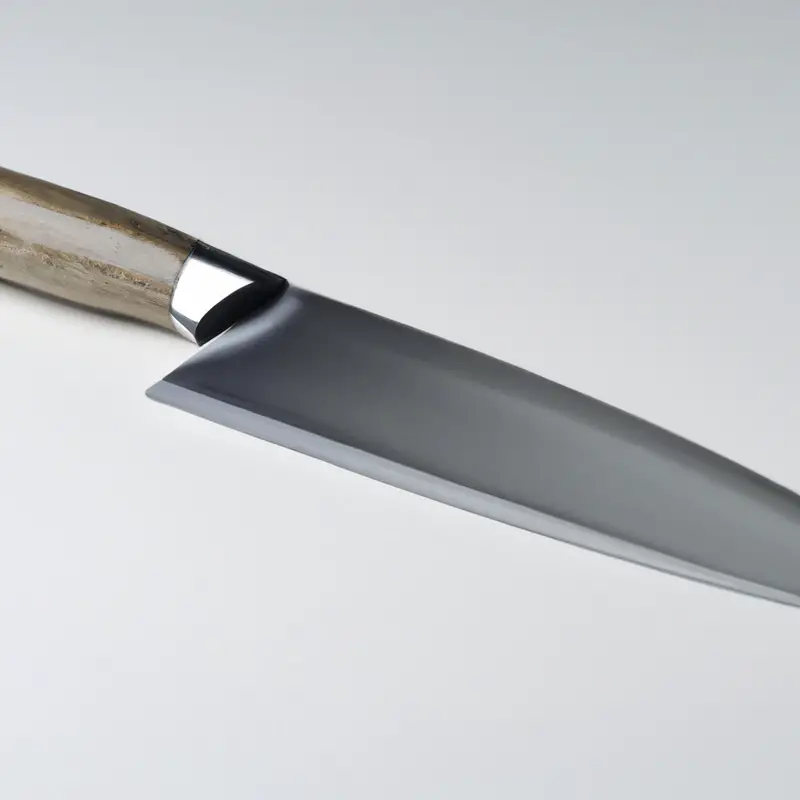
The Importance of Maintaining the Edge: Sharpening and Honing Your Gyuto Knife
Maintaining a sharp edge on your Gyuto knife is crucial for achieving clean and even slices. A dull blade not only makes slicing more challenging, but it can also cause damage to your ingredients and increase the risk of injury.
Sharpening and honing your Gyuto knife regularly will ensure its cutting edge remains sharp and effective.
Honing involves using a honing steel to straighten the blade’s edge after use, while sharpening entails removing a small amount of metal from the blade to create a new edge. It’s recommended to hone your Gyuto knife before and after each use, and to sharpen it every few weeks or as needed.
You can either invest in a sharpening stone or take it to a professional for sharpening.
Proper maintenance of your Gyuto knife’s edge will not only enhance your slicing skills but also increase the life of your knife, making it a valuable investment for your kitchen.
Choosing the Right Cutting Board for Safe and Effective Slicing
Choosing the right cutting board is crucial for safe and effective slicing with a Gyuto knife. A good cutting board should be sturdy, durable, and non-slip to prevent accidents.
Wooden cutting boards are popular for their affordability and natural appearance.
However, they require more maintenance as they can absorb moisture and can harbor bacteria if not cleaned properly. Plastic cutting boards are lightweight and easy to clean but can get scratches that can also harbor bacteria.
If you want a cutting board that is both durable and hygienic, go for a bamboo cutting board.
Bamboo is eco-friendly, naturally antimicrobial, and less prone to scratches compared to plastic. Additionally, it is a relatively hard surface that can resist cuts and grooves.
It is essential to have a cutting board that is large enough to accommodate your ingredients.
Ideally, it should be at least 12 inches long and 8 inches wide. A cutting board with a juice groove is also a great feature as it can catch the juices of your ingredients, keeping your countertop clean.
In summary, when choosing a cutting board for your Gyuto knife, consider the material, size, and durability.
Invest in a bamboo cutting board with a juice groove to ensure safe and effective slicing.
Advanced Techniques for Achieving Consistent and Professional-looking Slices
To achieve consistent and professional-looking slices with a Gyuto knife, there are several advanced techniques that you can apply. These techniques include:
- The Rolling Technique: This involves rocking the blade back and forth as you slice through the ingredient. It is ideal for vegetables and meats.
- The Guided Technique: This method involves using your fingers or a guide to hold the ingredient in place as you slice through it. It is best for small, delicate items like garlic and herbs.
- The Sliding Technique: This involves sliding the knife forward and backward in a slicing motion. It is perfect for slicing through large meats and fish.
- The Draw Cut Technique: This technique involves pulling the blade of the knife towards you as you slice through the ingredient. It is ideal for slicing soft cheeses and meats.
Take the time to master these advanced slicing techniques, and you will be able to achieve even and consistent slices like a professional chef. Remember to always keep the blade sharp and to use a proper cutting board to avoid damaging the blade.
How to Thinly Slice Delicate Items like Herbs and fish with a Gyuto knife
To thinly slice delicate items like herbs and fish with a Gyuto knife, you need to follow a few simple steps. Firstly, make sure the blade of the knife is sharp.
The sharper the knife, the easier it is to slice delicate items thinly without crushing them.
When slicing herbs, hold them together tightly with your non-dominant hand and slice downwards with the knife using a rocking motion. When slicing fish, use a light touch and slice with a smooth back and forth motion, using the entire length of the blade.
Avoid pressing down too hard as it may damage the flesh.
It’s important to use a comfortable grip and maintain a consistent angle when slicing. Additionally, try to slice against the grain for optimal results.
Practice makes perfect, so keep trying until you achieve the desired thickness and texture.
With these tips, you can now confidently slice delicate items like herbs and fish with your Gyuto knife.
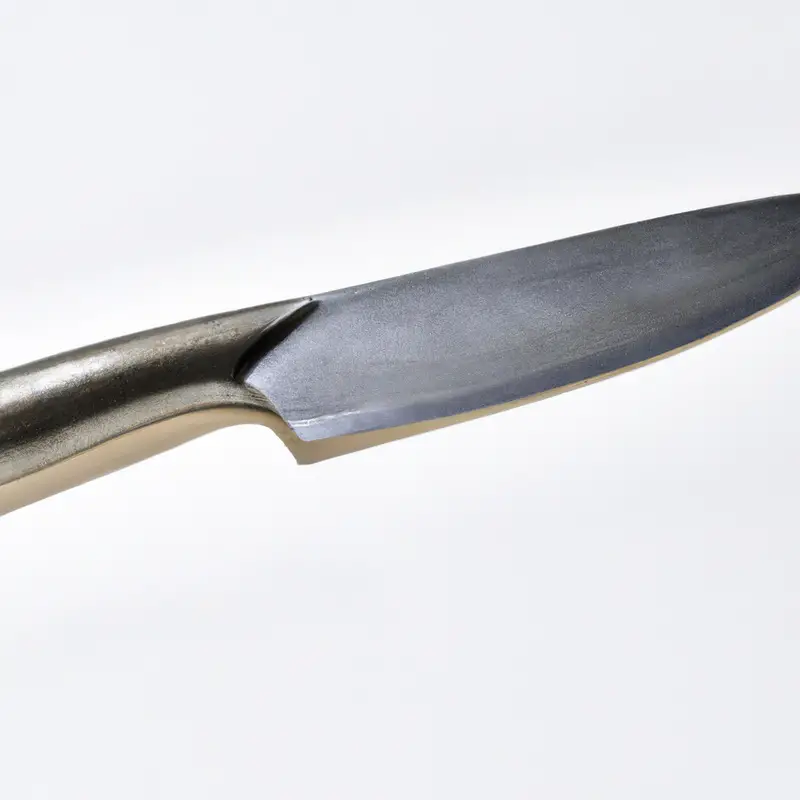
Applying the Rock-chop Technique for Precise and Efficient Slicing
Applying the Rock-chop technique involves forward and backward rocking motions of the knife to chop evenly and quickly. The technique starts by gripping the handle of the knife and placing the blade at a 20-25 degree angle on top of the item to be sliced.
Then, the knife should be rocked forward and backward while applying pressure to the blade.
The tip of the knife should remain in contact with the cutting board, while the rocking motion moves towards the back of the blade. This technique helps create even and precise slices, making it ideal for chopping vegetables, fruits, and meats.
Additionally, the Rock-chop technique is also efficient, minimizing strain in your shoulder and wrist muscles.
With proper practice and form, you can significantly improve your slicing speed and accuracy.
Keeping Your Gyuto Knife in Top Condition: Cleaning and Storage Tips for Longevity
To maintain the longevity of your Gyuto knife, cleaning and proper storage are key. After each use, wash the knife with mild soap and warm water, dry thoroughly with a clean towel, and store in a dry place.
Avoid soaking the knife in water or putting it in a dishwasher, as this can cause rust and damage the blade.
Use a honing rod to touch up the edge regularly and sharpen the blade as needed with a whetstone or professional sharpening service. Additionally, use a protective sheath or blade guard when storing the knife in a drawer or transporting it to prevent accidental damage.
Proper cleaning and storage of your Gyuto knife can ensure its performance and longevity for years to come.
Final Verdict
Mastering the art of slicing with a Gyuto knife requires patience, practice, and precision. By understanding the anatomy of the knife, preparing your ingredients correctly, and visualizing the types of cuts required, you can achieve consistent and professional-looking slices every time.
The key is to maintain the knife’s edge by sharpening and honing it regularly and selecting the appropriate cutting board for safe and effective slicing.
Advanced techniques such as rock-chop and thin slicing delicate items like herbs and fish can also help you take your slicing skills to the next level. By following these tips and techniques, you can become a slicing expert with your Gyuto knife, impressing your guests and making your cooking experience all the more enjoyable.
Remember, practice makes perfect- so don’t be afraid to keep honing your skills!

